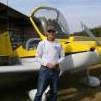Antenna mounted inside fiberglass belly panel
-
Members Online
- Skyland
- DonMuncy
- Justin Schmidt
- Robert Tanner
- Mike Tyson
- larryb
- PeteMc
- MIRICYL Baby
- chan65
- Glen S.
- KLRDMD
- exM20K
- donkaye
- GeeBee
- Griswold
- Aaviationist
- sdmideas
- takair
- wombat
- Flyler
- Scooter
- CCAS
- TCC
- FlyingDude
- ElkoRandy20J
- Samir13k
- JimMardis
- PT20J
- FlyLateNLife
- gabez
- Lax291
- LANCECASPER
- mluvara
- 7.Mooney.Driver.0
- NewMoon
- Serge Trudel
- Txcowboy
- redbaron1982
- Schllc
- CL605
- MB65E


Recommended Posts
Join the conversation
You can post now and register later. If you have an account, sign in now to post with your account.